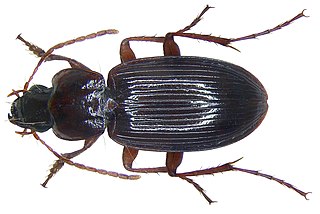
Yugoslavia was a country in Southeast and Central Europe that existed from 1918 to 1992. It came into existence following World War I, under the name of the Kingdom of Serbs, Croats and Slovenes from the merger of the Kingdom of Serbia with the provisional State of Slovenes, Croats and Serbs, and constituted the first union of South Slavic peoples as a sovereign state, following centuries of foreign rule over the region under the Ottoman Empire and the Habsburg monarchy. Peter I of Serbia was its first sovereign. The kingdom gained international recognition on 13 July 1922 at the Conference of Ambassadors in Paris. The official name of the state was changed to Kingdom of Yugoslavia on 3 October 1929.

The term Greater Serbia or Great Serbia describes the Serbian nationalist and irredentist ideology of the creation of a Serb state which would incorporate all regions of traditional significance to Serbs, a South Slavic ethnic group, including regions outside modern-day Serbia that are partly populated by Serbs. The initial movement's main ideology (Pan-Serbism) was to unite all Serbs into one state, claiming, depending on the version, different areas of many surrounding countries, regardless of non-Serb populations present.

The Yugoslav Wars were a series of separate but related ethnic conflicts, wars of independence, and insurgencies that took place from 1991 to 2001 in what had been the Socialist Federal Republic of Yugoslavia. The conflicts both led up to and resulted from the breakup of Yugoslavia, which began in mid-1991, into six independent countries matching the six entities known as republics that had previously constituted Yugoslavia: Slovenia, Croatia, Bosnia and Herzegovina, Montenegro, Serbia, and Macedonia. SFR Yugoslavia's constituent republics declared independence due to unresolved tensions between ethnic minorities in the new countries, which fueled the wars. While most of the conflicts ended through peace accords that involved full international recognition of new states, they resulted in a massive number of deaths as well as severe economic damage to the region.

Southeast Europe or Southeastern Europe (SEE) is a geographical sub-region of Europe, consisting primarily of the region of the Balkans, as well as adjacent regions and archipelagos. There are overlapping and conflicting definitions of the region, due to political, economic, historical, cultural, and geographical considerations.

Gradiška is a city in Bosnia and Herzegovina. As of 2013, it has a population of 51,727 inhabitants, while the city of Gradiška has a population of 14,368 inhabitants.
Troglohyphantes is a genus of sheet weavers that was first described by G. Joseph in 1881. The genus name is a combination of the Ancient Greek τρώγλη, meaning "cave (dweller)", and -hyphantes, a common ending for linyphiid genera.
Monolistra is a genus of isopod crustaceans in the family Sphaeromatidae. Its members are restricted to countries of the former Yugoslavia, Italy and Switzerland. It contains the following subgenera and species, four of which are listed as vulnerable (VU) or endangered (EN) on the IUCN Red List:

Anophthalmus is a genus of ground beetle, endemic to Europe.

Platyderus is a genus of ground beetles in the family Carabidae. There are more than 100 described species in Platyderus.
Speluncarius is a genus of in the beetle family Carabidae. There are more than 20 described species in Speluncarius.
Reicheadella is a genus in the ground beetle family Carabidae. There are about nine described species in Reicheadella, found in Europe.
Winklerites is a genus of ground beetles in the family Carabidae. There are more than 20 described species in Winklerites.

Deltomerus is a genus of ground beetles in the family Carabidae. There are more than 70 described species in Deltomerus.
Adriaphaenops is a genus in the beetle family Carabidae, first described by Kurt Hermann Gustav Otto Noesske in 1928. There are about 12 described species in Adriaphaenops, found in Europe.

Duvalius is a genus of beetles in the family Carabidae. They are distributed from the Mediterranean area to northwestern China. They typically live in caves and in shallow subterranean spaces. Many species are rare and have very restricted distributions.

The League of Communists of Kosovo was the Kosovo branch of the League of Communists of Yugoslavia, the sole legal party of Yugoslavia from 1945 to 1990.

Graciliella is a genus of cave beetle in the family Leiodidae. It was previously included in the genus Anthroherpon but DNA evidence showed that it is actually a more distantly related group of species. The paper in which Graciliella was published gained some media attention, with several stories picking up on the spider-like appearance of these beetles. Graciliella currently consists of six species, including the newly discovered Graciliella kosovaci and Graciliella ozimeci All species occur in subterranean habitats of the Dinaric Mountains, from Crvanj mountain in the north, to Trnovo (Montenegro) in the south, and from Žaba mountain (Croatia) in the west to Prokletije mountain (Montenegro) in the east.

Trechini is a large tribe of ground beetles in the family Carabidae. There are more than 270 genera and over 2,400 described species in Trechini, found throughout the world.











